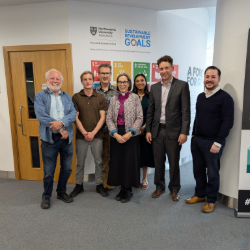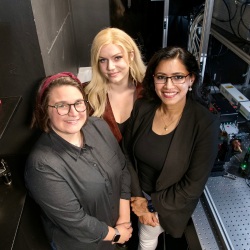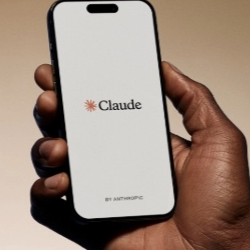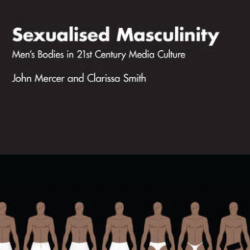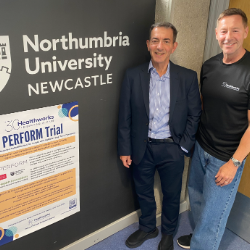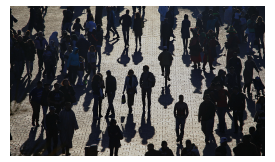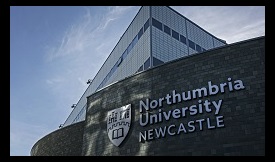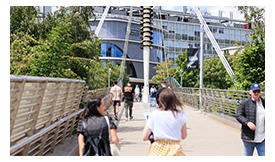-
Study
-
Clearing 2025
- Clearing FAQs
- Clearing VIP
- Clearing Case Studies
- Unlock Your Potential
- Undergraduate Funding
- Search Clearing
-
Undergraduate
- UCAS Clearing & Confirmation 2025
- Application Guides
- UCAS Exhibitions
- Foundation Years
- School & College Outreach
- Information for Parents
-
Postgraduate
- Application Guide
- Postgraduate Research Degrees
- Flexible Learning
- Change Direction
- Register your Interest
-
-
International
International
Northumbria’s global footprint touches every continent across the world, through our global partnerships across 17 institutions in 10 countries, to our 277,000 strong alumni community and 150 recruitment partners – we prepare our students for the challenges of tomorrow. Discover more about how to join Northumbria’s global family or our partnerships.
View our Global Footprint-
Quick Links
- Course Search
- Undergraduate Study
- Postgraduate Study
- Information for Parents
- London Campus
- Northumbria Pathway
- Cost of Living
- Sign up for Information
-
International Students
- Information for Students
- International Events
- Application Guide
- Entry Requirements and Education Country Agents
- Global Offices
- English Requirements
- English Language Centre
- International student support
- Cost of Living
-
International Fees and Funding
- International Undergraduate Fees
- International Undergraduate Funding
- International Masters Fees
- International Masters Funding
- International Postgraduate Research Fees
- International Postgraduate Research Funding
-
International Partners
- Agent and Representatives Network
- Global Partnerships
- Global Community
-
International Mobility
- Information for Northumbria Students
- Information for Incoming Exchange Students
-
-
Business
Business
The world is changing faster than ever before. The future is there to be won by organisations who find ways to turn today's possibilities into tomorrows competitive edge. In a connected world, collaboration can be the key to success.
More on our Business Services -
Research
Research
Northumbria is a research-rich, business-focused, professional university with a global reputation for academic quality. We conduct ground-breaking research that is responsive to the science & technology, health & well being, economic and social and arts & cultural needs for the communities
Discover more about our Research-
Quick Links
- Research Peaks of Excellence
- Academic Departments
- Research Staff
- Postgraduate Research Studentships
- Research Events
-
Research at Northumbria
- Interdisciplinary Research Themes
- Research Impact
- REF
- Partners and Collaborators
-
Support for Researchers
- Research and Innovation Services Staff
- Researcher Development and Training
- Research Ethics and Integrity
- University Library - Open Access
- Vice Chancellors Fellows
-
Research Degrees
- Postgraduate Research Overview
- Doctoral Training Partnerships and Centres
- Academic Departments
-
Research Culture
- Research Culture
- Research Culture Action Plan
- Concordats and Commitments
-
-
About Us
-
About Northumbria
- Our Strategy
- Our Staff
- Place and Partnerships
- Leadership & Governance
- Academic Departments
- University Services
- History of Northumbria
- Contact us
- Online Shop
-
-
Alumni
Alumni
Northumbria University is renowned for the calibre of its business-ready graduates. Our alumni network has over 246,000 graduates based in 178 countries worldwide in a range of sectors, our alumni are making a real impact on the world.
Our Alumni - Work For Us
What will I learn on this module?
At the heart of all advances in photonics is a greater understanding of light-matter interactions and the processes used to fabricate devices.
students will develop knowledge of how matter responds to an interacting field, the underlying photophysics, and their performance and suitability for use in integrated quantum photonic devices. This module covers the following three topics:
Nonlinear Optics and Lasers
Linear Optics, Nonlinear effects -frequency mixing, Non-linear effects-self focussing, solitons, photorefractive effect, four wave mixing, Properties of laser light, Laser resonators, Types of lasers and applications
Molecular Photophysics
Organic Semiconductors, Molecular Orbitals, Jablonski Diagrams, Absorption and Emission Processes, Electron-Hole Pair Formation, Fluorescence, Phosphorescence, Excited State Lifetimes, Decay Rates, Organic Light-Emitting Diodes.
Integrated Quantum Photonics
Wavelength-scale optical waveguides, micro- and nano resonators, novel photon sources, photonic circuits design, Maxwell’s equations, light propagation in complex structures, classical and quantum optical circuits.
How will I learn on this module?
A wide range of learning and teaching approaches are used in this module that include lectures, seminars, and directed and independent learning. Lectures are used to allow the students to initially re-acquaint with fundamental concepts in Optics and Photonics before the introduction of Nonlinear photonics, Photophysical properties and Quantum Photonics. Seminars support this process through worked examples and specialistic software installed in the IT labs.
In particular, technology enhanced learning opportunities involve for example, software to visualise the interactions of electric and magnetic fields with one another and with matter and sources. Students gain greater autonomy and independence through this module and are directed to seminal references which provide a basis for further student-led exploration of the state-of-the-art. This process helps students to develop critical thinking skills for example forming judgements on the credibility of a reference. It also provides active scientific discussion and engagement, thus strengthening students’ employability through knowledge and critical thinking about special topics in photonics and the current Quantum and Molecular Photonics research landscape.
Independent study is supported by further technology-enhanced resources provided via the e-learning portal, including lecture notes, software guidance and open-access journal papers. You will be provided with a reading list and a list of aspects of the topic to be further developed as an assignment.
The assessment consists of two coursework assignments (50%, 50%). Feedback will be provided individually. The module will make use of electronic submission, assessment and feedback. Formative feedback will be provided during seminars.
How will I be supported academically on this module?
The module will be delivered using a combination of lectures and seminars.
In addition to direct contact with the module team during lectures and seminars, students are encouraged to develop their curiosity by making direct contact with the module team either via email or the open-door policy operated throughout the programme. Students will also be regularly referred to supporting resources including relevant texts and multimedia relevant to the module. References to these resources will be made available through the e-learning portal and in lectures and seminars.
What will I be expected to read on this module?
All modules at Northumbria include a range of reading materials that students are expected to engage with. Online reading lists (provided after enrolment) give you access to your reading material for your modules. The Library works in partnership with your module tutors to ensure you have access to the material that you need.
What will I be expected to achieve?
Knowledge & Understanding:
1. Demonstrate critical knowledge and understanding of the theory behind light matter interactions.
2. Demonstrate critical knowledge and understanding of the operation of quantum photonic devices.
Intellectual / Professional skills & abilities:
3. Critically evaluate problems in nonlinear optical interactions using advanced mathematical techniques.
4. Ability to design, simulate and critically analyse quantum photonic devices.
Personal Values Attributes (Global / Cultural awareness, Ethics, Curiosity) (PVA):
5. Manage your own learning, through knowledge of available reading sources, including advanced texts and research papers and scientific databases.
6. Effectively and concisely communicate complex theory in written form and design simulations.
How will I be assessed?
The assessment consists of two coursework assignments (worth 50% and 50%). Coursework 1 relates to the underlying theory in advanced photonics covered in Quantum and Molecular Photonics and is a written assignment (maximum 2000 words). Coursework 2 will be a computational assignment ( maximum 20 pages) and relates to the design and simulation of quantum photonic devices and components.
SUMMATIVE MLOs
1. Coursework 1 (50%) -1, 3, 5, 6
2. Coursework 2 (50%) -2, 4, 5, 6
FORMATIVE
1. Seminar problems 1, 2, 3, 4, 5, 6
Feedback is provided to students individually and in a plenary format both written and verbally to help students improve and promote dialogue around the assessment.
Written feedback will be provided on coursework.
Formative feedback will be provided during seminars.
Pre-requisite(s)
KD5082, KD5083, KD6041. These are core modules.
Co-requisite(s)
N/A
Module abstract
Photonics is the science of light, and it relates to the emerging field of Quantum Optics and Quantum Information, which study phenomena linked to the fundamental concepts of Quantum Physics. Quantum physics is at the heart of the modern world; light is central to multi-interdisciplinary research. “Quantum and Molecular Photonics” is likely to be a key technology in the future. This course consolidates the knowledge in this field in an instrumental process that has wide applicability in many other science and engineering domains. Quantum and Molecular Photonics module draw heavily from state-of-the-art research for example in quantum optics and nanomanufacturing techniques; laser/maser technology and brightness enhanced light sources; photophysical and functional properties of organic semiconductors; novel photonic devices and applications enabled by structured light physics. Through the module, problems and examples are used to illustrate both the fundamental and applied nature of the subject. The assessment builds on this through two challenging coursework assignments. Graduates are equally prepared for a career in industry or academia. The skills and knowledge gained through this module place you in an excellent position to capitalise on employment opportunities in new markets enabled by advances in photonics, or to progress your academic career as a professional physicist.
Course info
UCAS Code F3F5
Credits 20
Level of Study Undergraduate
Mode of Study 3 years Full Time or 4 years with a placement (sandwich)/study abroad
Department Mathematics, Physics and Electrical Engineering
Location City Campus, Northumbria University
City Newcastle
Start September 2025 or September 2026
All information is accurate at the time of sharing.
Full time Courses are primarily delivered via on-campus face to face learning but could include elements of online learning. Most courses run as planned and as promoted on our website and via our marketing materials, but if there are any substantial changes (as determined by the Competition and Markets Authority) to a course or there is the potential that course may be withdrawn, we will notify all affected applicants as soon as possible with advice and guidance regarding their options. It is also important to be aware that optional modules listed on course pages may be subject to change depending on uptake numbers each year.
Contact time is subject to increase or decrease in line with possible restrictions imposed by the government or the University in the interest of maintaining the health and safety and wellbeing of students, staff, and visitors if this is deemed necessary in future.
Useful Links
Find out about our distinctive approach at
www.northumbria.ac.uk/exp
Admissions Terms and Conditions
northumbria.ac.uk/terms
Fees and Funding
northumbria.ac.uk/fees
Admissions Policy
northumbria.ac.uk/adpolicy
Admissions Complaints Policy
northumbria.ac.uk/complaints

